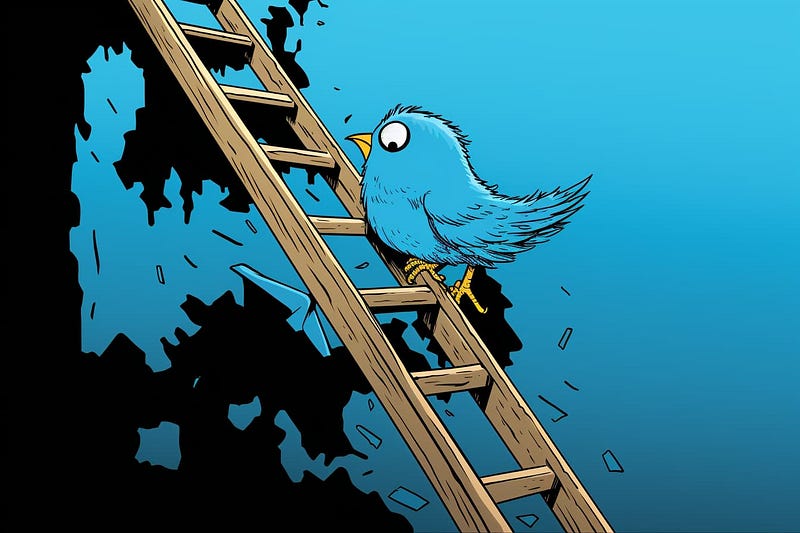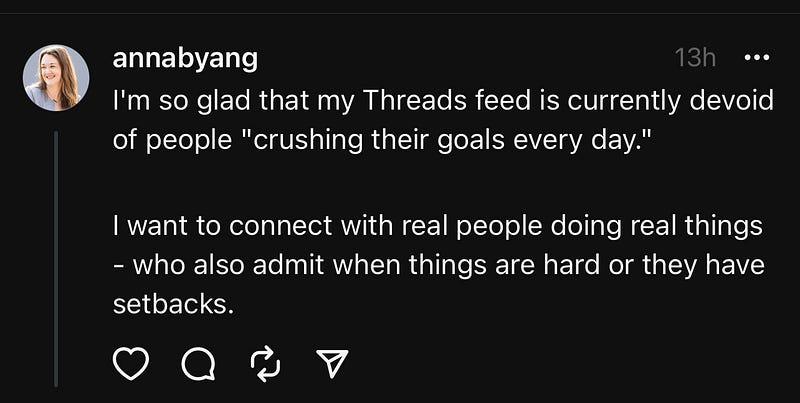The Downfall of Twitter, the Rise of Threads
Has a viable Twitter alternative finally arrived?

My phone vibrated in the early evening of July 5th. A notification: Threads were now available for download.
I’d heard that Meta was building a Twitter alternative a few months ago. At the time, the release date was unknown. Then I tripped across the news that Threads would be released on July 6th. I’ve never before requested notification of an app’s release, but I did with Threads. I immediately signed up with my Instagram account.
And I wasn’t alone: Threads has now crossed 100 million signups in the first four days of its existence. Of course, signups and active users are two entirely different things, but the excitement is there.
I’m sure many people, like me, have been eagerly awaiting a Twitter replacement.
A viable alternative to Twitter?
I left Twitter a few months ago. I didn’t deactivate my account, but I pinned a message to my profile that I’m no longer actively using the account — with a Canva image of links to my other online accounts.
The straw that broke my back was when Elon Musk began suppressing links to Substack, retaliation against Substack’s release of Substack Notes (a potential Twitter alternative). Though Musk’s war against Substack was brief, I saw the writing on the wall: Twitter would always be subjected to Musk’s irrational whims.
As a Substack writer, I tried Substack Notes, but it wasn’t the same. Bluesky temporarily halted signups to deal with performance issues. And Mastodon hasn’t gained steam, perhaps due to its confusing structure.
Based on the barebones features of Threads, I suspect that Meta was capitalizing on users’ frustration with Twitter. Days before, Musk announced daily limits on Tweet views: 600 posts per day for accounts not paying for Twitter Blue and 6,000 for Twitter Blue subscribers. The limits were later raised to 1,000 and 10,000 respectively, but the aggressive limitations likely ticked off the many, many non-Twitter Blue subscribers.
Was it an attempt to force more people to pay for Twitter Blue? Or maybe because Twitter hadn’t paid its Google Cloud bill? Musk’s stated reasoning — to deal with massive screen-scraping by outside companies — makes little sense for a platform that currently monetizes through ads and keeping people on the site.
Musk has certainly given Twitter users plenty of reasons to leave since his takeover. Limiting actual usage of the platform? Just the push that many people needed to flock to Threads upon its release.
People want community
It’s clear that people want to connect with like-minded folks online. We don’t want exposure to The Entirety of Internet because it makes for an unpleasant experience.
There’s a world of difference between civil discourse over opposing viewpoints and trolls, vitriol, and harassment.
Twitter had devolved into a cesspool of hate. Finally, it felt like the company began to take content moderation seriously, kicking people off the platform if they violated community guidelines. Then Musk took over and that went out the window. Hate speech surged, in part due to Musk’s firing of the content moderation and safety teams, and in part because Musk tolerated (and even invited?) such rhetoric.
So people left. They visited the app less frequently. The quirky, witty conversations in my feed had been replaced by Twitter Blue subscribers whose “pay to play” mentality only meant that they weren’t that interesting in the first place. Twitter was no longer a fun place.
I joined a bunch of Slack and Discord communities, but it wasn’t the same as chance encounters with interesting people online. Such closed groups lacked the “global town hall” feel that Twitter once had. I used to run to Twitter during breaking news events for real-time updates. All of that was gone as Twitter collapsed under Musk’s desperation and mismanagement.
Have fun with early adoption on Threads
Threads certainly have an edge as a viable alternative to Twitter due to its built-in user base. People with large numbers of Instagram followers can find themselves immediately popular on Threads.
But for people like me who never used Instagram as a primary platform, the possibilities are exciting. There’s no chronological feed right now (though Threads promises this is coming soon), so it has a TikTok feel: you’re served up content that the algorithm thinks you’ll like. Outside of the numerous sports accounts I quickly have to mute, it’s pretty good. I’ve already found a bunch of my online friends from other social networks like LinkedIn. (If Meta could find a way to import my Twitter and LinkedIn contacts, I would be delighted.)
Anyone who claims to have a “strategy” for Threads right now is lying or trying to sell you something. There is no strategy right now. It’s a very fun “post things and see what happens” vibe — with many users commenting that they hope it stays this way forever.

Reality check: It probably won’t. Eventually, we’ll see ads. Individuals and companies will develop a Threads strategy that plays to the algorithm. But it’s nice to dream about a community — a large one! — that actively rejects hate and toxicity.
Diversify your online presence
As a writer, I’ve been waiting for another text-based social network to emerge. I’m a solopreneur and online creator. My income is dependent on finding clients and my audience — so my presence on social platforms is critical.
I was really late to the Twitter party. I was a lurker for a long time and only became serious about the platform in late 2021. By that point, it was really hard to connect and grow. So I focused my energy on LinkedIn instead, with a lot more success.
As Twitter circled the drain, I found myself nervous. All of my eggs were now in the LinkedIn basket, which I knew was a risky strategy. Musk’s takeover was a reminder that a platform can change at any time, without much warning.
Is Threads the answer? Early signs point to “yes.” It’s at least worth the effort to explore.
Check out my free eBook: How to Manage Your Time and Content Across Multiple Platforms.





